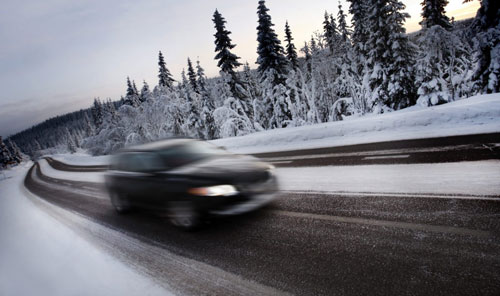
As the weather gets colder, you’ll likely see your car run less efficiently, so make the most of your mileage and hit the road. From weather conditions to driving habits, these factors can add up to a big drop in mileage.
Winter Is Tough on Your Vehicle
Cold weather means cold engines. As the temperature outside lowers, it will affect your car and the temperature of your engine as it sits in the driveway or garage. That means when you start your car it will take longer for the engine to heat up to the optimal performance temperature. When running below optimal temperature, the engine uses fuel less efficiently.
Your battery performance may also struggle in colder weather. As a result, you may find your alternator has to work harder to keep the battery charged. This means your car is not running as efficiently as it may have in warmer months.
During the fall, your tire pressure light may come on. That’s completely normal and an easy fix; simply head to your local gas station and fill your tires up to the manufacturer-recommended pressure. Usually, you can find the recommended tire pressure for your specific car on a sticker on the driver’s side door. Generally, your tire pressure decreases approximately one PSI per 10 degrees Fahrenheit drop in air temperature. Be sure to carefully monitor your tire pressure throughout the colder months as under-inflated tires do not perform as well. Poor tire performance generally results in a further decrease in your car’s overall gas mileage.
Watch Out for Winter Driving Conditions
In most places, colder months have a higher chance of treacherous road conditions, meaning driving will likely be less efficient overall. To start, cold air is more dense than warmer air resulting in an increase in drag, particularly at highway speeds. There are also more accidents on the roadways which will have you idling in traffic more often than in the summertime.
Those icy roads can be troublesome for your gas mileage as well. If the roads are slippery, you’ll have to drive slower meaning your trip will take longer and use more fuel. Your tires may also have reduced traction resulting in wasted energy; if you choose to use 4-wheel drive to combat icy roadways, more energy is expended than would be in a leisurely summer drive.
Costly Cold Weather Conveniences
No one wants to sit in a freezing cold car right at the start of their day. Many people choose to turn on the car and let it warm up before pulling out of their driveway. This will inevitably use more gas. In addition, many people opt to drive rather than walk short distances in inclement weather. In the summer, the sun is shining and it can be refreshing to take a walk around the block. In the winter, it’s common to opt for convenience, sacrifice the gas and just drive instead. These little trips can add up and make a notable difference in your average mileage for the month.
For help addressing these wintertime concerns, visit MilexCompleteAutoCare.com. Learn how they can help improve your mileage and optimize your car for winter weather!